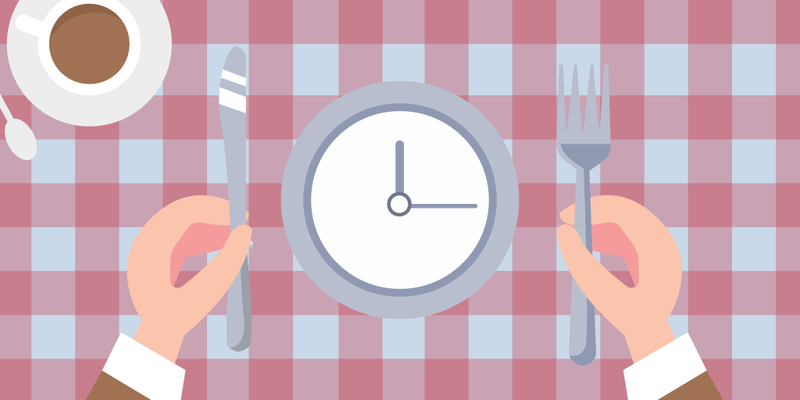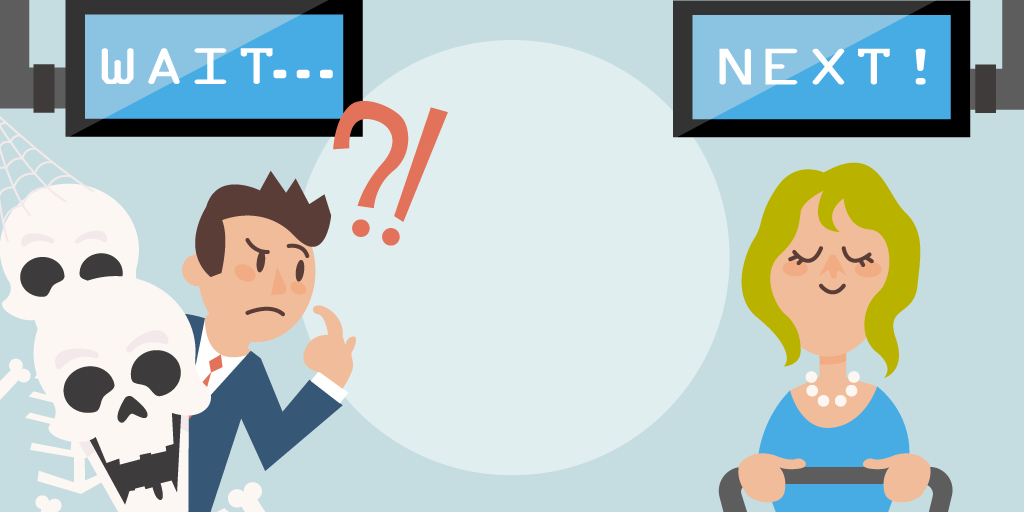When your stomach is grumbling, the last thing you wants to do is keep waiting to eat. Because the hungrier we get, the grumpier we get. Which is why restaurants that don’t have an effective queueing strategy risk scaring off customers and ultimately hurting their business’ success.
Restaurants are unlike other businesses in that the customer’s mission isn’t to make a purchase and get out as fast as possible. They want to sit, chat, socialize, and eat — all while having a pleasant experience.
And the major part of that pleasant experience has to do with restaurant queues.
Why Restaurants Need to Care About Queues

Sometimes businesses can feel immune. Especially restaurants. If there’s a line out the door then they must be doing something right. But, long queues, over a long period of time, ultimately hurt business.
How exactly? Well, some ways are more obvious than others:
Customers become fed up with waiting and leave the restaurant for a competitor.
Negative experiences mean negative reviews are posted online.
A lost customer will probably never return.
While quarterly profit is typically seen as a measure of success, customer satisfaction holds equal weight. It costs 4 to 10 times more to acquire new customers than it does to retain existing ones.
That means a restaurant that builds a loyal customer base is likely to be more successful than a restaurant that needs to constantly attract new customers.
Plus, happy customers want to share their positive experiences with friends and family — and even complete strangers, thanks to social media. This inclines additional customers to eat at your restaurant, effectively proving the power of word-of-mouth advertising!
If restaurants want to foster a customer experience that keeps customers coming back for more food, they have to learn how to reduce customer waiting time.
How to Manage Waiting Customers
Waiting rooms are a typical element of eating at a restaurant. But, just because waiting is a typical part of eating out, doesn’t mean impatient customers can be ignored.
These soon-to-be paying patrons are just as valuable as customers who have just signed on the dotted line.
Be Honest
Customers know they have to wait when restaurants are busy. What they don’t know is how long they’ll be waiting. And not knowing is agonizing.
It’s the unknown that drives people crazy. 15 minutes doesn’t seem so bad when customers know it’s only 15 minutes. But waiting in ignorance makes us feel like we have no control over our lives.
In fact, studies have shown that uncertainty sours the whole meal. A long waiting time can leave customers with a negative impression, even if the food was delicious.
Restaurants need to be honest with customers as to how long they’ll be waiting. Sincerity goes a long way in building loyalty and catering to an atmosphere that knows how to reduce waiting time in restaurants.
The worst queueing theory restaurant example is a scenario in which a restaurant tells their customers the wait will only be 15 minutes when the staff knows the wait will be at least 45 minutes. That’s a quick way to scare customers out the door.
Entertain Your Guests

No business should ever leave their customers high and dry. Entertain them!
When people are distracted — when they have something to do — their minds don’t wander to the queue.
After all, 86% of customers are likely to spend more money if they have a positive experience. Fostering that positive experience begins with the queue.
Digital signage, also known as HDTVs, provides the most noticeable means to distract customers. Restaurants with bars exemplify this queueing theory restaurant example. Sports bars prominently display so many HDTVs that any angle will feature a screen broadcasting a match.
Television is obvious. But TVs are not the only means of distraction. Other means of entertaining customers include:
Live music, or at the very least speakers.
Free samples of appetizers.
Arcade games or social media prompts.
Or, why not distract customers by letting them order drinks while they wait? Drinks boost customer’s moods by drawing them into the dining experience before being seated.
A happy customer is a satisfied customer.
So long as patrons are entertained they won't focus on the queue. And when they’re not focused on the queue they don’t mind waiting to sit down to eat.
Use Pre-Orders
It’s common knowledge that many restaurants enable customers to make a reservation ahead of time. Customers call, reserve a seat, and then arrive promptly to avoid waiting in queue.
This reservation system can be taken to a whole new level.
Allow customers to pre-order their meals. Use an online application form to free up phone lines, so that customers can order their food, stroll in and pick it up.
Even better, allow customers to make reservations online. Doing so frees up worker’s time from answering phone calls and fits into people’s habits: using smartphones to access every tidbit of information.
Or, why not be a trendsetter?
Along with a reservation, give customers the option to order their meals ahead of time. That way they sit, and moments later their food is on the table and still piping hot. Doing so allows the kitchen to organize more efficiently and moves customers along their journey in a smooth process.
Restaurant Queuing and Data Analytics

You must have heard it before: use analytics data to gain invaluable insights into your restaurant.
The same rule applies to any business.
Learn Your Client Base
Most managers understand when their business will hit peak hours. For restaurants, it’s intuitive to assume that Fridays and weekends will see more people rushing in to grab a bite to eat.
But, intuitions don’t always align with reality, or our intuitions may overlook other factors at play.
When gathered correctly, data doesn’t mislead. Footfall analytics, collected over time, gives restaurants a general picture of when their busiest times will occur.
Let’s illustrate with a queueing theory restaurant example:
A manager already knows she needs to have more staff on-site on weekends, but it turns out the restaurant is also consistently busy every second Wednesday of the month.
It wasn’t obvious that on those Wednesdays, the local memory care center drives their seniors to the mall across the street, who then, hungry, walk to the restaurant for the early bird special.
The point being, data grants invaluable insights into understanding when restaurants are at their busiest.
Learning From Bottlenecks
Not only will analytics data show your restaurant when it’s peak hours occur, but also whether or not there any bottlenecks. That means hang-ups. These are difficult to spot in person since no one has eyes everywhere.
A bottleneck might point to inefficiencies. It might be time to hire another sous chef to help lighten the load or schedule more servers for a specific timeframe.
Adopt a Restaurant Queue Management System

There’s a simple solution to help you with most queue management issues — a queue management system. It’s the easiest way to reduce customer waiting time.
Many restaurants have adopted a token system. Waiting customers hold onto an electronic box. Once it beeps, they know it’s their turn to be served.
But even these tokens are outdated. They’re cumbersome to monitor and risk being lost or broken. But perhaps more importantly, they seem redundant in a world where almost everyone is carrying a smartphone.
At the same time, QMS enables restaurants to alert customers when it’s their turn to be served through an SMS alert — a simple text message. Doing so frees up customers to busy themselves however they want in the meantime.
Want to grab a drink at the bar or window-shop at the mini-mall nearby? You’re free to do so without being afraid of missing your lunch.
Since the restaurant delivers accurate waiting times thanks to their efficient time organization, customers know exactly how long they have to wait. They’re not plugged into a small hallway with other customers waiting to be served.
Some restaurants are notorious for their long waiting times before being seated and served. But this image can be scrubbed.
Adopting the aforementioned tactics to better understand how to manage queues will greatly help any restaurant reduce customer waiting time.
The most powerful tool at any restaurants disposal is a queue management system like Qminder. Don't believe us? Give it a try — Qminder comes with two weeks of free trial.






